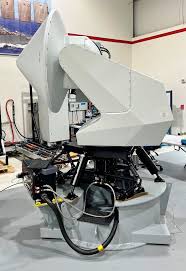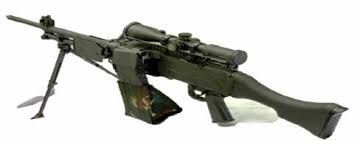The US Navy’s search for a next-generation X-band radar is becoming more relevant by the day as U.S. warships fight in the first significant naval conflict since World War II.
Since late last year, U.S. and coalition naval forces have fought off regular attacks on commercial shipping in the Red Sea.
Houthi rebels have launched sophisticated anti-ship ballistic missiles and swarms of long-range drones to slip through radar detection and destroy unarmed civilian vessels.
The Navy has not had to repel such wide-scale attacks since WWII, Admiral Brad Cooper, Commander, FIFTH Fleet and Combined Maritime Forces in the Middle East told CBS News for its Feb. 18 story, “Navy Counters Houthi Red Sea Attacks in its first major battle at sea of the 21st Century.”
In fact, this is the first time U.S. warships have faced advanced anti-ship missiles capable of flying at approximately 3,000 mph.
“No one has ever used an anti-ship ballistic missile, certainly against commercial shipping much less against U.S. Navy ships,” Cooper told CBS.
This conflict demonstrates that these modern naval weapons are no longer reserved for near-peer adversaries and that they will likely become the weapons of choice for other terrorist groups.
Thales recognizes that the Navy needs a proven radar technology for its Future X-Band Radar (FXR) program – one that can be produced in the U.S. and effectively detect the most challenging threat targets in either littoral or blue-water operational environments.
A next-generation X-band is key to surface-ship survival in the highly challenging threat scenarios faced today and likely even more so tomorrow.
Naval ships under fire must be able to detect and track very small targets such as drones, missiles, or a submarine’s periscope against land and sea clutter background.
In addition, the Navy needs a next-generation X-band that can support target designation, illumination, and missile communications which can contain missile status, target position, and other key data.
Thales has pioneered and mastered X-band naval radar technology proving itself as a global leader in the development of X-band radar solutions fielded in the U.S. and several NATO-member navies.
It was more than 50 years ago when Thales first introduced the WM28 series of multi-function radars that combined search, tracking, and fire control functionalities in a Combined Antenna System.
Today, the MK 92 Fire Control System is in use by the U.S. Navy and Coast Guard and allied navies.
With 15 states supporting a range of R&D, engineering, and manufacturing activities, the Thales industrial foundation is expanding to meet market and customer demands.
A long history and partnership with Leonardo DRS’ Sensors Center of Excellence has enabled Thales to accelerate its time to market for the delivery of X-band radar products such as the SCOUT and SQUIRE.
Currently, three systems comprise the latest and most capable Thales naval X-band radars, beginning with the high-end Active Phased Array Radar (APAR) Block 2. Designed for smaller vessels, the next offering is the versatile NS50 family of 4D surveillance and fire control radars.
Both APAR Block 2 and NS50 are state-of-the-art Active Electronically Scanned Arrays (AESA). Lastly, there is STIR 1.2 EO Mk 2, a fire control radar proven highly effective and reliable in the most challenging operational conditions.
APAR Block 2 is the current generation of Thales’ original APAR, the world’s first X-band AESA multi-function radar.
The navies of Germany, Belgium, and The Netherlands recently selected APAR Block 2, which will provide air and missile defense fire control, integrated with the latest U.S.-developed naval missiles, to defeat saturation attacks by anti-ship missiles.
Poland, France, The Netherlands, and Belgium have chosen Thales’ NS50 radars, which use dual-axis multi-beam forming technology and full Doppler to provide 4D coverage against even the smallest and most difficult air and surface targets.
NS50s feature a modular, AESA antenna architecture, which allows them to perform highly flexible beam management to various mission and operational environments.
The system also offers enhanced Doppler resolution and reduced reaction time.
These lightweight, software-defined radars also offer reduced latency, higher accuracy, and increased update rates compared to previous generations of radars.
The package combines detect, track, and engage features into a single sensor system for superior situational awareness plus fire-control-accuracy tracking to support a range of different missile and medium-caliber gun systems.
Together, these features result in an improved standoff range and kill probability.
Lastly, the STIR 1.2 EO Mk 2 Fire Control Radar is in service with multiple NATO navies, having withstood testing in extreme real-world conditions.
Its range, accuracy, and reliability against sea-skimming threats, in all types of clutter, jamming, and weather conditions are well appreciated by their navies.
This enhanced performance is possible due to its solid-state X-band and Ka-band radar capability in combination with a complete electro-optical, infrared, and laser sensor package.
Combined with Thales’ solid-state Continuous Wave Illumination Transmitter, it provides active missile guidance for the NATO Sea Sparrow, Evolved Sea Sparrow, and Standard Missile families.
Due to its high demand, additional production capacity is now operating at pace.
The U.S. Navy will continue to face an increasingly complex mix of smaller, faster, and more agile threats that attack simultaneously.
Thales has the expertise in future X-band technology to adapt to changing Navy requirements as the threats to U.S. surface fleets become more unpredictable.





